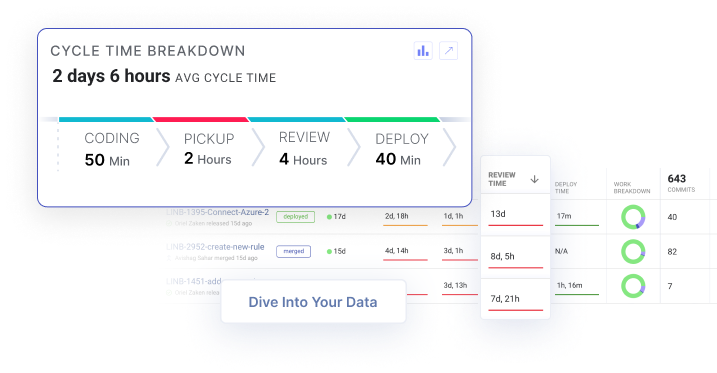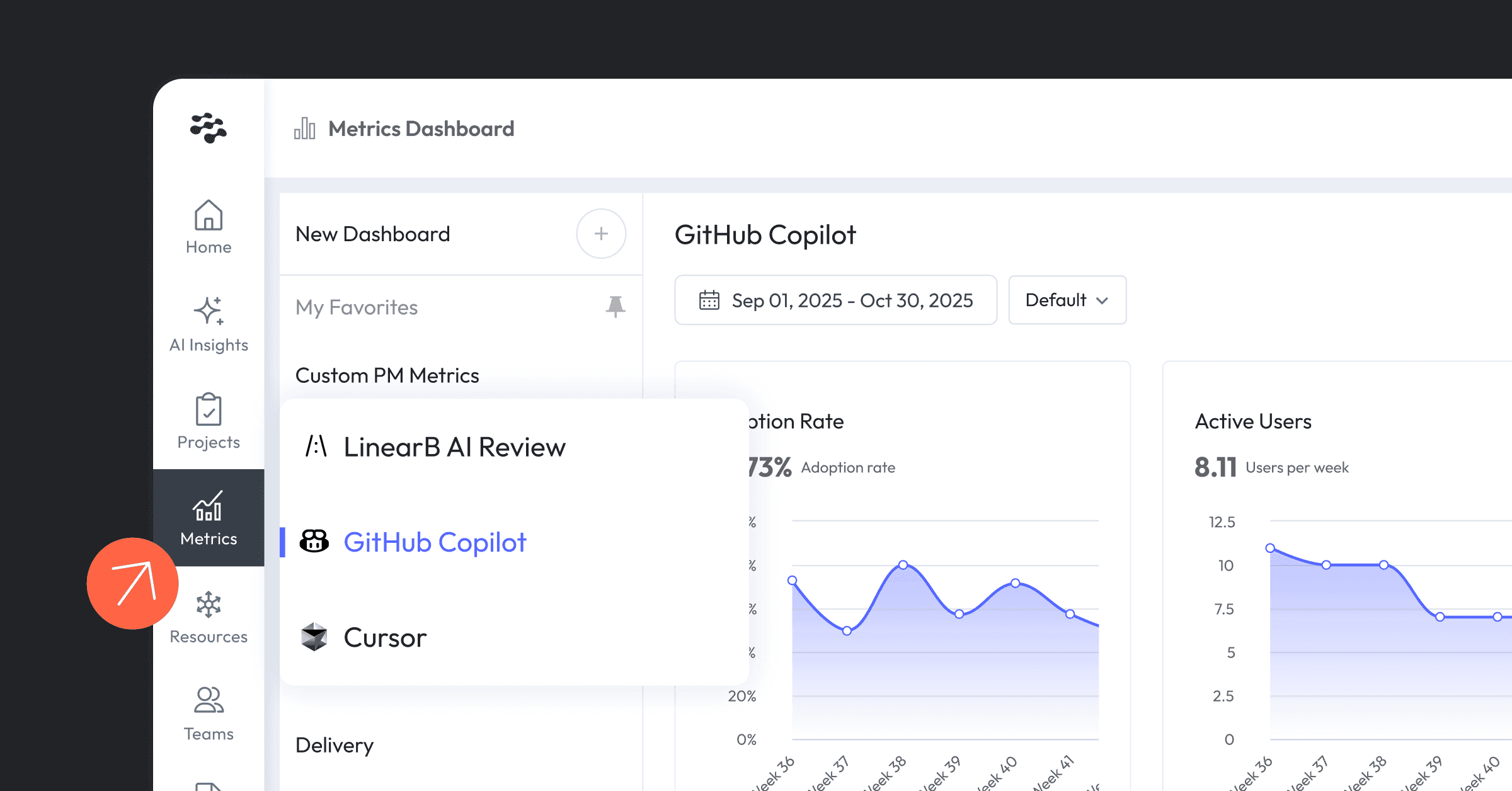Plain and simple: If your engineering team’s cycle time – the amount of time from work started to work delivered – is too long, nothing else really matters.
Customers won’t get their features, sales teams can’t deliver on promises and the entire business outside the engineering department will fail.
This is why cycle time and breaking its components down into manageable chunks that can be improved, is at the heart of what LinearB does.
We took some time to talk to Zach Goldberg, CTO of Dama Financial to learn how management, teams and individual contributors all use LinearB to improve cycle time.
Let leaders know cycle time, all the time
At the CTO and director-level of engineering, the most important thing you need to be able to do is have ready access to what people are working on and when it will be done – in short, the health of your cycle time.
In his search to get a handle on the effectiveness of the org he oversees and how it connects to business outcomes, Zach Goldberg and Dama Financial landed on LinearB.
“I am very interested in cycle time, as a whole, across the team” explains Zach Goldberg on how he thinks about cycle time as a director.
“[I need to know] how long it takes us to go from idea to specification to release to a customer. LinearB is crucial in the back half of that cycle (everything after the idea).”

Help engineers make the decisions that reduce cycle time
The four major components of cycle time are: 1) Coding time; 2) Pickup time; 3) Review time; and 4) Deploy time. The actual time it takes to complete these is the sum of a host of behaviors, decisions and practices done by individual developers.
LinearB is designed to make sure that each of these individual behaviors is optimized in ways that brings the time down in each – a point Zach says has been crucial in engineers taking control of cycle time and bringing it down on their own.
“We’re constantly coaching [engineers to make] small pull requests, small commits… to keep things moving” explains Zach. “As a tool for improving behaviors and habits on a day-to-day basis, LinearB is always brought up.”

Helps managers quantify the quality of work
Most team leads or managers were elevated to that position because they were great at coding, not because of their specific management skills. LinearB has been key in helping these engineers get crucial performance information that they didn’t know they needed to run effective teams.
In short, LinearB has been a crucial tool in helping the next-gen of managers concretely grasp metrics that help them understand their teams and bring their cycle times down.
“Most managers I speak to don’t think about quantifying performance. It’s still a really difficult thing” explains Zach. “As a tool to make sure we’re all growing in the same direction or thinking about performance in a similar way, LinearB is helpful across the organization.”
“[Having] the same metrics from the same tool is super helpful.”
Cycles of success…

The good news for you? Zach and Dama Financial’s experience with LinearB isn’t the exception: It’s the rule. Over 80% of organizations who adopt LinearB see these cycle time and performance improvements – with business-changing results coming in under 120 days of implementation. For more information on how LinearB can help your team improve cycle time as well as a host of other performance metrics, check out LinearB’s guide to improving your engineering metrics.




